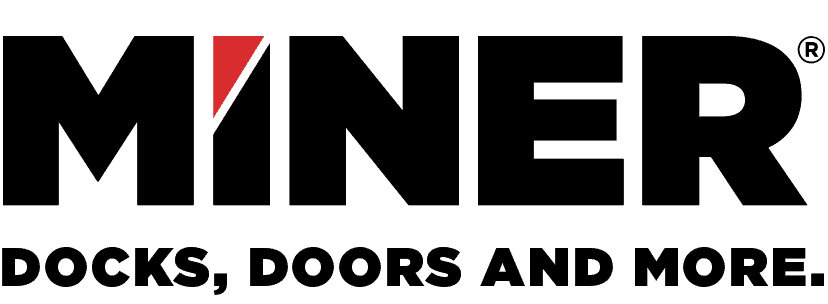OSHA Loading Dock Safety Checklist: Meet and Exceed Requirements
Your loading dock is a critical piece of your warehouse, distribution center, or other facility. Keeping this space in compliance with Occupational Safety and Health Administration (OSHA) regulations is essential for avoiding fines and other penalties. Compliance is also a baseline to build on as you strive to create a safe, efficient logistics environment.
Why Do You Need To Focus on Loading Dock Safety?
A loading dock can be dangerous for organizations that don’t take the proper precautions. OSHA warns that the fatality rate in warehousing jobs is higher than in other environments, and forklifts are especially dangerous, with roughly 100 people dying in forklift vehicle accidents annually.
The agency lists such dock-specific hazards as:
- Products falling on material handling employees.
- Equipment striking dock workers or passersby.
- Forklifts driving off the edge of the loading dock.
From equipment installation and maintenance to employee training and everyday leadership, there are essential practices to implement around your loading dock. Following a checklist describing these priorities is a way to create a safer environment.
Start Right Now!
Start Right Now!
Loading Dock Safety Checklist
With a rising trend in facility accidents across industries, safety should be top of mind for every facility leader. To prioritize workplace safety and help ensure safe practices at the loading dock, prevent OSHA violations, and establish a robust safety management system, follow these key tips:
The First Step
Conduct a loading dock safety audit
Work with an expert national service provider like MINER to monitor compliance with safety regulations and identify areas for improvement. Address any identified deficiencies promptly and implement corrective actions.
Equipment
Inspect and install safety railings
Install fall protection equipment around every dock edge at least four feet off the ground. Railings should conform to OSHA standards for height and resistance to reduce the risk of falls. In addition to railings, there should be visual warnings (like yellow stripes) near dock edges.
Update dock levelers, dock boards, and dock plates
Implement appropriate dock levelers to eliminate the gap between trailers and the loading dock. OSHA regulations require that every dock plate or mechanical dock leveler must be tested to withstand the maximum load it will carry during regular use. Personnel must then keep loads to that level. Exceeding capacity can lead to equipment damage or failures, resulting in employee injuries and product damage.
Install trailer restraints
Modernize vehicle restraint systems to reduce the risk of trailer tip-overs or trucks pulling away from the loading dock while personnel are still inside. Use mechanical restraints and warning light systems in conjunction with wheel chocks.
Training and People Management
Promote a Safety Culture
Encourage your workforce to prioritize safety and actively participate in safety initiatives. Consider forming safety committees or designating safety representatives. Empower workers to report hazards, near misses, and safety concerns without fear of retaliation.
Implement safety policies and procedures
Establish and publicize policies that are clear, comprehensive, and tailored to your workplace. Ensure understanding of safety protocols, hazard recognition, and proper use of personal protective equipment (PPE).
Provide Adequate Training
Train all personnel in operations relevant to their roles on topics such as hazard communication, fall protection, machine guarding, emergency procedures, and equipment operation. Discourage risky practices like jumping onto or off of docks.
Focus on Safe Forklift Operation
Train, evaluate, and certify all forklift drivers as specified in OSHA regulations. Best practices for forklift driving include keeping speed to 5 mph or less, slowing down in heavily trafficked areas, and inspecting the vehicle before every use.
Offer resources and encourage engagement
Give employees tools and information to maintain a safe work environment. Involve employees in decision-making and encourage ideas for improving safety practices. Recognize and reward them for their commitment to safety.
FIND A LOADING DOCK REPAIR PROVIDER NEAR YOU
FIND A LOADING DOCK REPAIR PROVIDER NEAR YOU
Ongoing Upkeep
Keep your loading dock clean
Every time workers begin loading or unloading or a forklift operator starts driving, ensure the loading dock is free of debris, water, and ice to prevent any possible sliding issues.
Conduct regular risk assessments
Assess the condition of facilities, equipment, and processes to identify potential safety hazards and take proactive measures to address them.
Our MinerCARE® Safety and Service Programs help you proactively identify potential problems and ensure every aspect of your facility is running safely and at peak performance. Learn more about our SafeACT and SafeCHECK programs.
AT A GLANCE: FREQUENTLY ASKED QUESTIONS
What Are the OSHA Requirements for Loading Docks?
The key OSHA regulation for designing and building a loading dock is OSHA Standard 1910, with key elements including Subpart D, which pertains to walking and working surfaces.
How Do I Make My Loading Dock OSHA Compliant?
To make your loading dock conform to OSHA requirements, you should start with a safety audit to determine any areas of noncompliance regarding design, equipment, or practices. Then you can apply a loading dock safety checklist.
What Should Be Included in a Loading Dock Safety Checklist?
Your loading dock safety checklist should cover the installation and maintenance of all key dock equipment, including vehicle restraints, safety barriers around the dock edge, dock door systems, and more. It should also cover safety training for all dock workers to ensure dock operations proceed safely.
